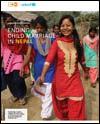What's New
Displaying results 1701 - 1710 of 4052
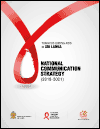
Resource | Publications,
The stakeholders in the National AIDS Committee have all come together with the understanding that a widespread plan for communication is the best way forward for ending AIDS by 2025. The strategy will also help mitigate gaps still prevailing within the current intervention programs, especially in reaching populations around the country with prevention information, sexual health education and sufficient awareness on the basics of HIV/AIDS/STIs along with available services. Apart from the main focus on prevention of transmission, the strategy addresses the barrier of stigmatization surrounding those infected; promoting services related to HIV/AIDS/STI, advocacy related efforts and managing information for monitoring and evaluation.
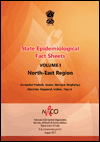
Resource | Fact Sheets,
This technical document consists of epidemiological profiles (fact-sheets) for States and districts based on information available from multiple data sources including the HIV Sentinel Surveillance (HSS) and the Integrated Biological and Behavioural Surveillance (IBBS). Given the need for focussed prevention efforts in low/high prevalence and vulnerable States/districts, the information presented will be useful for policy makers, program planners at national/State/district level, researchers, and academicians in identification of areas for priority attention and also to derive meaningful conclusions for programme planning, implementation, monitoring and scale-up.
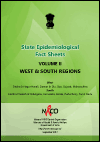
Resource | Fact Sheets,
This technical document consists of epidemiological profiles (fact-sheets) for States and districts based on information available from multiple data sources including the HIV Sentinel Surveillance (HSS) and the Integrated Biological and Behavioural Surveillance (IBBS). Given the need for focussed prevention efforts in low/high prevalence and vulnerable States/districts, the information presented will be useful for policy makers, program planners at national/State/ district level, researchers, and academicians in identification of areas for priority attention and also to derive meaningful conclusions for programme planning, implementation, monitoring and scale-up.
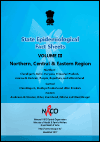
Resource | Fact Sheets,
This technical document consists of epidemiological profiles (fact-sheets) for States and districts based on information available from multiple data sources including the HIV Sentinel Surveillance (HSS) and the Integrated Biological and Behavioural Surveillance (IBBS). Given the need for focussed prevention efforts in low/high prevalence and vulnerable States/districts, the information presented will be useful for policy makers, program planners at national/State/ district level, researchers, and academicians in identification of areas for priority attention and also to derive meaningful conclusions for programme planning, implementation, monitoring and scale-up.
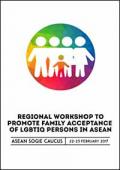
Resource | Publications,
The ASEAN SOGIE Caucus, in partnership with Trung Tâm ICS in Vietnam, organized the Regional Workshop to Promote Family Acceptance of Lesbian, Gay, Bisexual, Transgender, Intersex and Queer (LGBTIQ) Persons in ASEAN. Allies from the academe, the child rights movement, community organizations, and Vietnam’s Parents and Friends of Lesbians and Gays (PFLAG) gathered to discuss key issues regarding families and their relationships with LGBTIQ people, good practices in promoting family acceptance, and potential strategies to move the advocacy forward in Southeast Asia. This area of LGBTIQ advocacy is critical given the symbolic and cultural power families have in the region, which are often considered the fundamental units of society and the nation.
During the final session, participants grouped together to discuss plans of action in both their respective countries and the wider region with the aim of promoting family acceptance on a larger scale. Considerations included engaging with religious leaders and communities, boosting local and national lobbying efforts for inclusive legislation, and strengthening coalition work with other rights-based movements.

Expert Group Meeting on the Evidence Base for Accelerated Action to End Child Marriage in South Asia
Resource | Publications,
In September 2016, the Asia-Pacific Regional Office of United Nations Population Fund (UNFPA APRO) and the UNICEF Regional Office for South Asia (UNICEF ROSA) hosted a three-day expert group meeting to examine the evidence around programming and policies to end child marriage in South Asia. The meeting convened representatives from the host organizations, as well as UNFPA, UNICEF and UN Women country offices in South Asia and surrounding countries, experts from academia and representatives from organizations implementing programmes in the region.
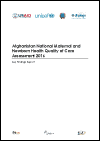
Resource | Publications,
The report provides a summary of quantitative indicators of maternal and newborn health service readiness and quality of care at public facilities in Afghanistan. Detailed results are presented for public and private facilities in Appendix 2. Overall, the results show that while most facilities have the drugs and supplies needed for routine and emergency maternal and newborn care, and family planning, many women are receiving poor quality and disrespectful care. There are many concerning gaps in the provision of antenatal, intrapartum, and postnatal care for women and newborns.

Resource | Publications,
Bangladesh has the highest rate of child marriage in Asia – and the fourth highest rate of child marriage in the world. Marriage is illegal for girls under the age of 18 and for boys under 21, with exemptions that allow for marriage with special permission. However, almost three out of five young women were married as children, with more than one in five married by the age of 15 in 2014.
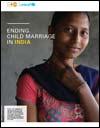
Resource | Publications,
India has the largest number of child brides in the world — one third of the global total. Yet recent data indicates that in the last decade there has been a significant decline in the prevalence of child marriage among women now in a particular age range.






